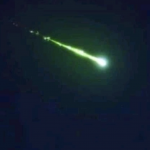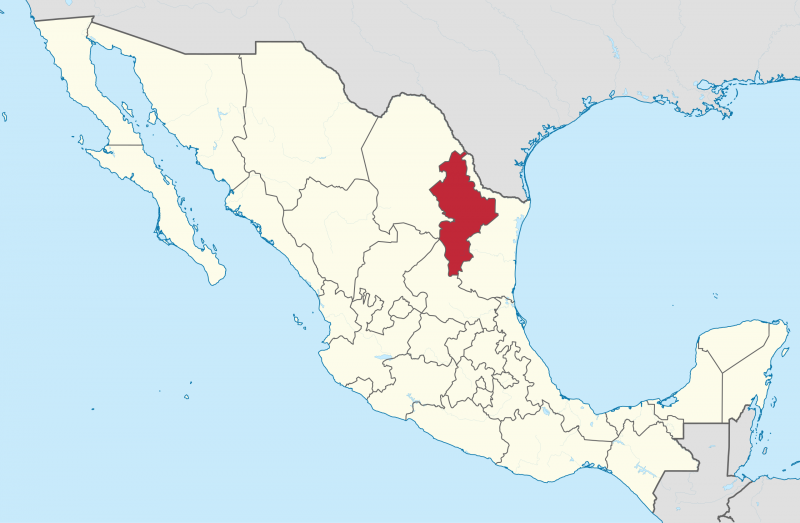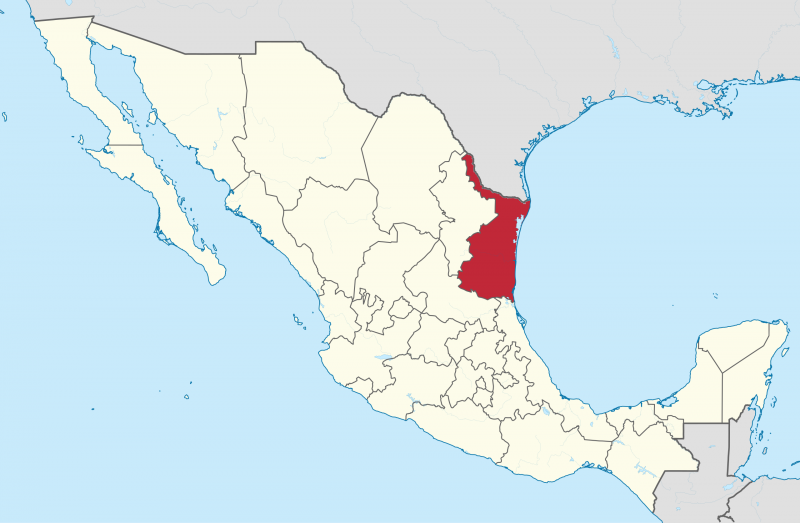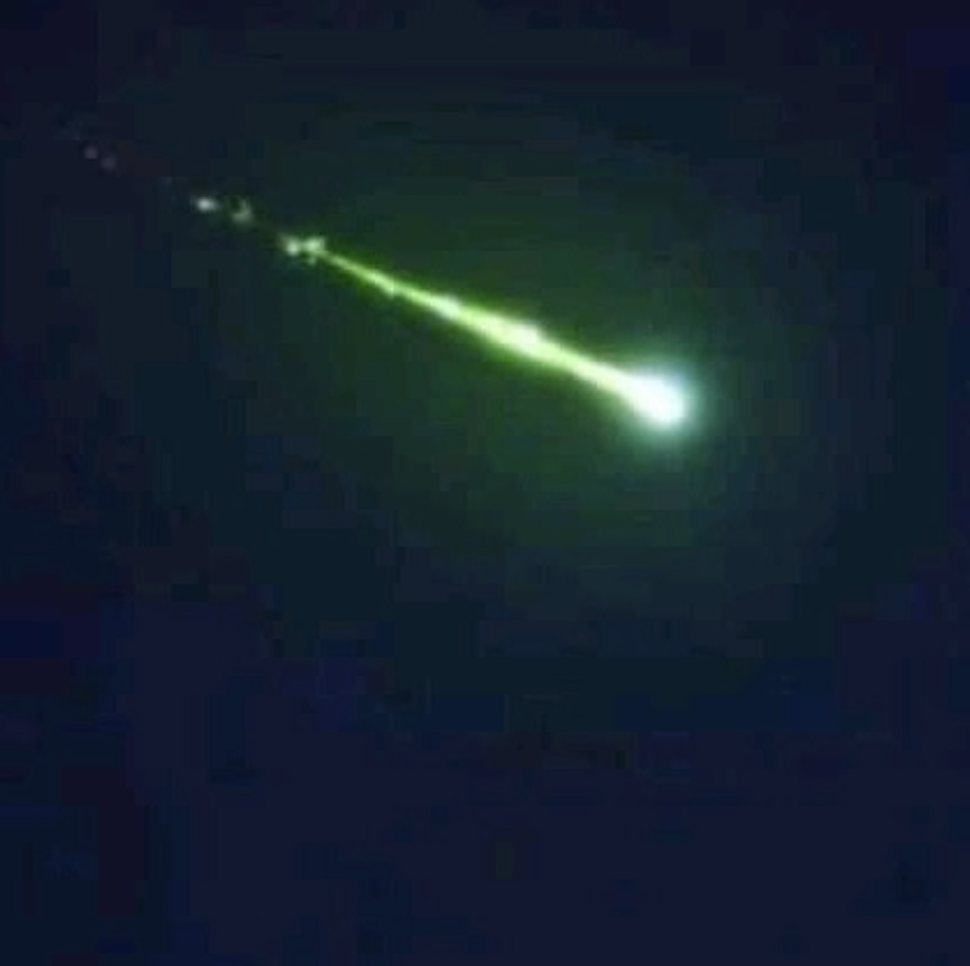
Startled sky observers in northeastern Mexico looked up around 10:14 p.m. local time on Tuesday (October 6, 2020) and witnessed a bright fireball – an especially bright meteor – falling through Earth’s atmosphere. The meteor was also caught on some security cams, webcams and doorbell cams. In part because it was visible over the city of Monterrey (population 1.1 million) – in the Mexican state of Nuevo León – the meteor was widely seen. What is more, although EarthSky has not confirmed this, newspapers in Monterrey reported that the meteorite, or chunk of space rock left after the meteor’s fall, landed in a small town in the neighboring state of Tamaulipas. The video above is from a daily newspaper distributed in Monterrey, called El Norte.
According to Newsweek:
The fireball was most visible above the states of Nuevo León, Coahuila and Tamaulipas, which border the U.S., around 10:14 p.m. local time, according to the Global Atmospheric Monitoring Agency, part of Mexico’s Institute of Geological and Atmospheric Research.
Bright fireballs such as this one are common if you consider Earth as a whole. They happen frequently. However, from any one spot on Earth’s surface, catching sight of a bright fireball like this one can be a once-in-a-lifetime event. Some of the larger rocks from space fall into the ocean each year, while smaller ones tend to burn up completely in Earth’s atmosphere.
Northern Hemisphere autumn is also a good time to watch for meteor showers. There are at least two meteor showers going on now: the Draconids and the Taurids. However, meteors that happen in annual showers are different creatures entirely from meteors that start out as space rocks and sometimes fall to the ground. Meteor showers stem from icy debris left behind in the orbits of comets. These particles of debris are approximately the size of rice grains, and it is so fragile that it vaporizes entirely in our atmosphere, never reaching the ground. Thus the meteor seen over Monterrey – and this week’s meteor showers – are not related.

The Mexican state of Nuevo Leon. The city of Monterrey is located approximately in the middle of this state, which almost, but not quite, shares a border with the southern U.S. Image via Wikimedia Commons.

The Mexican state of Tamaulipas, where the meteorite from the October 6 fireball reportedly fell. Image via Wikimedia Commons.
In a double-whammy from nature this week, Hurricane Delta also made landfall this week – early in the day on October 7 – along the Gulf Coast in northeastern Mexico.
Hurricane #Delta makes landfall along the coast of northeastern Mexico near Puerto Morelos around 5:30 AM CDT with estimated maximum winds of 110 mph. Latest information at: https://t.co/tW4KeGdBFb pic.twitter.com/cWKYybKCMi
— National Hurricane Center (@NHC_Atlantic) October 7, 2020
Bottom line: A fireball – an especially bright meteor from space – blazed over northeastern Mexico on Tuesday, October 6, 2020. Special thanks to EarthSky friend and veteran astrophotographer Raul Cortes Espinosa for the heads up!
from EarthSky https://ift.tt/3d7LwJv

Startled sky observers in northeastern Mexico looked up around 10:14 p.m. local time on Tuesday (October 6, 2020) and witnessed a bright fireball – an especially bright meteor – falling through Earth’s atmosphere. The meteor was also caught on some security cams, webcams and doorbell cams. In part because it was visible over the city of Monterrey (population 1.1 million) – in the Mexican state of Nuevo León – the meteor was widely seen. What is more, although EarthSky has not confirmed this, newspapers in Monterrey reported that the meteorite, or chunk of space rock left after the meteor’s fall, landed in a small town in the neighboring state of Tamaulipas. The video above is from a daily newspaper distributed in Monterrey, called El Norte.
According to Newsweek:
The fireball was most visible above the states of Nuevo León, Coahuila and Tamaulipas, which border the U.S., around 10:14 p.m. local time, according to the Global Atmospheric Monitoring Agency, part of Mexico’s Institute of Geological and Atmospheric Research.
Bright fireballs such as this one are common if you consider Earth as a whole. They happen frequently. However, from any one spot on Earth’s surface, catching sight of a bright fireball like this one can be a once-in-a-lifetime event. Some of the larger rocks from space fall into the ocean each year, while smaller ones tend to burn up completely in Earth’s atmosphere.
Northern Hemisphere autumn is also a good time to watch for meteor showers. There are at least two meteor showers going on now: the Draconids and the Taurids. However, meteors that happen in annual showers are different creatures entirely from meteors that start out as space rocks and sometimes fall to the ground. Meteor showers stem from icy debris left behind in the orbits of comets. These particles of debris are approximately the size of rice grains, and it is so fragile that it vaporizes entirely in our atmosphere, never reaching the ground. Thus the meteor seen over Monterrey – and this week’s meteor showers – are not related.

The Mexican state of Nuevo Leon. The city of Monterrey is located approximately in the middle of this state, which almost, but not quite, shares a border with the southern U.S. Image via Wikimedia Commons.

The Mexican state of Tamaulipas, where the meteorite from the October 6 fireball reportedly fell. Image via Wikimedia Commons.
In a double-whammy from nature this week, Hurricane Delta also made landfall this week – early in the day on October 7 – along the Gulf Coast in northeastern Mexico.
Hurricane #Delta makes landfall along the coast of northeastern Mexico near Puerto Morelos around 5:30 AM CDT with estimated maximum winds of 110 mph. Latest information at: https://t.co/tW4KeGdBFb pic.twitter.com/cWKYybKCMi
— National Hurricane Center (@NHC_Atlantic) October 7, 2020
Bottom line: A fireball – an especially bright meteor from space – blazed over northeastern Mexico on Tuesday, October 6, 2020. Special thanks to EarthSky friend and veteran astrophotographer Raul Cortes Espinosa for the heads up!
from EarthSky https://ift.tt/3d7LwJv


Aucun commentaire:
Enregistrer un commentaire